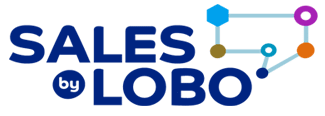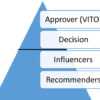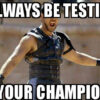A strong partnership between salespeople and Business Development Representatives (BDRs) are critical for success. As a salesperson, I know this first hand. While BDRs typically focus on securing meetings and generating leads, it’s important to recognize that their ultimate clients are the salespeople themselves. In this blog post, we’ll explore why salespeople are BDRs’ clients and offer tips for BDRs to successfully partner with them while never losing sight of this crucial dynamic.
Understanding the Relationship
In the traditional sense, BDRs are tasked with prospecting and qualifying leads, but who are these leads for? Salespeople. In essence, salespeople are the end clients of BDRs – they rely on BDRs to provide them with qualified opportunities and meetings that they can then convert into sales. Recognizing this client-provider relationship is essential for BDRs to effectively prioritize their efforts and deliver value to their internal stakeholders.
Tips for Success: Navigating the Salespeople-BDR Relationship
- Align with Sales Goals: To be successful, BDRs must align their efforts with the broader sales objectives of the organization. This means understanding the target market, ideal customer profile, and key priorities of the sales team to ensure that the leads generated are relevant and valuable.
- Communicate Effectively: Open and transparent communication is key to a successful partnership between BDRs and salespeople. BDRs should regularly update sales teams on their progress, share insights from prospecting activities, and solicit feedback to continually refine their approach.
- Provide Quality Opportunities: Salespeople rely on BDRs to deliver high-quality opportunities that have the potential to convert into revenue. BDRs should focus on identifying prospects with genuine interest and need for the company’s products or services, rather than simply generating volume.
- Be Responsive and Reliable: Salespeople operate in a fast-paced environment and often have tight deadlines to meet. BDRs should prioritize responsiveness and reliability, ensuring that they promptly follow up on leads, provide accurate information, and support sales efforts as needed.
- Maintain Accountability: Accountability is crucial in the client-provider relationship between BDRs and salespeople. BDRs should track their performance metrics, such as lead conversion rates and meeting-to-opportunity ratios, and hold themselves accountable for delivering results that align with sales objectives.
Never Losing Sight: The Importance of the Salespeople-BDR Dynamic
While it’s easy for BDRs to get caught up in the daily grind of prospecting and lead generation, it’s essential never to lose sight of the underlying dynamic at play: salespeople are their clients. By recognizing this fact and prioritizing the needs and objectives of sales teams, BDRs can foster stronger partnerships, drive more meaningful results, and ultimately contribute to the overall success of the organization.
Conclusion
In the intricate ecosystem of business development, salespeople serve as the unsung clients of BDRs. By understanding this dynamic and adopting a client-centric approach, BDRs can forge stronger partnerships with sales teams, deliver higher-quality opportunities, and drive tangible business outcomes. So, as BDRs navigate the sales landscape, let’s never lose sight of the vital role that salespeople play as our clients and partners in success.











